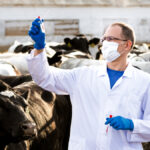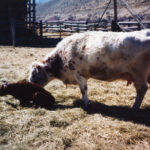
More is not necessarily better in cow-calf production
Don't up the dose — use animal health products at the proper rate and time

Timing is key for effective use of cattle oilers
Animal Health with Roy Lewis: There is a recommended window for when control products should be used

Be alert to bovines consuming ‘software’
Animal Health with Roy Lewis: Twine, plastic, rope — there is a good chance it could end up in an animal’s gut

Do animal diseases impact humans?
Animal Health with Roy Lewis: COVID-19 is an extreme example of disease transmission between animals and humans known as zoonosis

Taking a look at a new antimicrobial product
It's important to look at the pros and cons, if any, and ask questions

Due diligence with Johne’s disease
Have animals tested and cull infected cattle early

Tips for a healthy calving season
Animal Health with Roy Lewis: All players should share ideas of what works and what doesn’t

Leptospirosis in cattle is difficult to study
Animal Health: Often affects beef reproduction and can reduce milk production

Snow can work as a winter water source for cattle
Animal Health: But it’s also important to have a fresh source available

Keeping animal diseases away from humans
Animal Health: Veterinarians are part of the team of essential workers during COVID-19

